Gaining access to personal data can cause problems from losing accounts on social networks to stealing money, requesting PINs or credit cards in your name, even stealing your crypto and using your social security number for illegal activities. To protect yourself from hacking, use secure networks, two-factor authentication and different passwords for all your accounts.

Table of Contents
What Is Hacking?
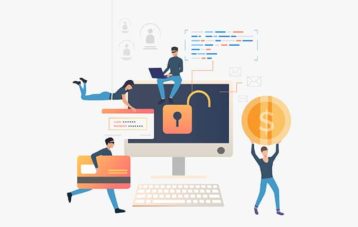
Hacking is the act of obtaining unauthorized access to a computer or a network, usually with malicious intentions. Any device can be compromised – computers, tablets, smart cars, baby monitors and even pacemakers. Some hackers install keyloggers, send malicious messages through emails and messengers, spread spyware or viruses or use your device to send various types of illegal material.
The most well-known hacker is Kevin Mitnick, an American who hacked the North American Aerospace Defense Command (NORAD) and became the inspiration for the movie War Games. What’s especially interesting about him is that he never exploited the data that he stole, leading many to believe that he did it only to prove it could be done. Gary McKinnon, known in online communities as “Solo” is the mastermind behind the security breach of over 90 computers belonging to the U.S. Armed Forces and NASA.
Another prominent figure in the hacking world is Albert Gonzales. At age 22 he was arrested for card fraud because he stole data from numerous debit card accounts. He operated on Shadowcrew, which was an underground marketplace that was active more than a decade ago. When Gonzales was arrested he became an informant for the Secret Service to avoid prison, and he was responsible for many indictments of Shadowcrew members. While working as an informant he continued to breach the privacy of numerous card accounts and credit cards.
What Are the Common Hacking Tools?
The following programs are the most common hacking tools:
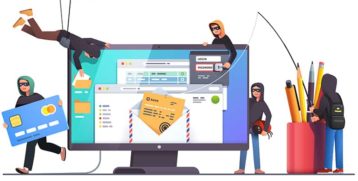
- Network Mapper (Nmap) is a free scanner that network administrators can use to see what devices are running on their system and to detect various security risks.
- Metasploit is a Ruby-based modular penetration tool that allows the user to test vulnerabilities, enumerate networks, test out the attacks and much more. Metasploit is publicly available.
- Burp Suite’s expertise is testing web applications. Its ease of use makes it one of the most popular tools among web app security researchers. With it, you can assess the security of your web application.
- SuperScan is a Windows-based scanner used by system administrators to test the security of their networks. What sets it apart from other tools is its ability to conduct ping and port scans using a valid IP address.
- Nessus is a remote tool that will notify you if there is a vulnerability on your computers, such as access to sensitive data or a misconfiguration.
- Nikto scans web servers for dangerous and outdated files, captures cookies and searches for areas susceptible to cyber-attacks.
- Angry IP Scanner is a free platform that keeps devices safe by scanning IP addresses and looking for live hosts and open ports.
Note:
These tools keep security systems safe which is why ethical hackers use them. Ethical hacking is where the hacker penetrates systems or networks and exploits their vulnerabilities. All of this gets done with verified access. These ethical hackers can use ethical hacking tools such as Metasploit or Burp Suite to see whether systems are penetrable and to locate their vulnerabilities.Who Is a Hacker?
Initially, a hacker was considered anyone enthusiastic about technology and programming. Nowadays, a hacker can be anyone with technical knowledge to overcome an obstacle, usually a security system.
Why Do Hackers Hack?
There are various reasons why hackers decide to hack, but the most frequent motivation is to gain profit. Hackers are a huge financial burden on consumers, banks and companies. They are responsible for nearly $1 trillion in costs per year. Some do it to cause chaos, such as Black Hat Hackers, but many do it out of curiosity or as a means for political activism. Hackers can also hack to blackmail or extort someone or to perform corporate espionage.
What Are the Warning Signs That You’ve Been Hacked?
If your computer has been hacked, you might notice any of the following hacking warning signs:

- Deactivated antivirus software: This is often the first sign that will make you wonder if you got hacked. If you notice that your antivirus software is disabled, take these steps to ensure the safety of your computer:
- Run Microsoft Autoruns to detect the malicious software.
- If the malware remains undetected, perform a complete restore.
- If malware was detected but could not be deleted, go to the Start menu and search for the section Add or remove programs. Locate the program and click the Uninstall button.
- If that does not work, use the Registry Editor program to remove the malware.
- Unusual activities such as password changes: If your password still doesn’t work after 10-15 minutes (perhaps the website was under maintenance or had technical difficulties), then you should examine whether you fell prey to phishing. To approach this problem, contact the service provider.
- Unexpected software installs: Keep in mind that numerous unwanted programs get installed along with some legally obtained software. To prevent this, be sure to read license agreements. Process Explorer can help you list out all of your programs and disable them if needed.
- Frequent crashes: If your computer is slow and crashes from time to time, inspect it using anti-malware software.
History of Hacking and Hackers

The history of hacking can be traced back to the 1960s when researchers working in the artificial intelligence labs at MIT that were fluent in FORTRAN became the pioneers of the hacking craft. Hacking history went through four phases:
- Prehistory of hacking – The beginning of hardware-based hacking.
- Golden age of cracking – This is the time when hacking communities were formed.
- Hacking Division – After various communities were established, activities such as cybercrime and hacktivism became more frequent.
- Final phase – The latest phase includes state-sponsored hacking and hardware hacking.
What Are the Types of Hackers?
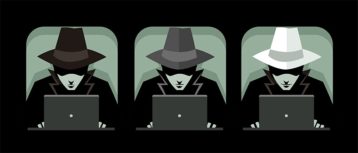
- Black Hat Hacker – A criminal that hacks with malicious intent.
- White Hat Hacker – A computer security expert skilled in penetration testing, which ensures the security of a device, network or app.
- Gray Hat Hackers – They look for vulnerabilities in systems without the knowledge of the system’s owner. If they find an issue, they report it and offer to fix it for a fee.
- Script Kiddies – Refers to an individual that is not skilled in hacking. They use others’ scripts to attack systems.
- Green Hat Hackers – A new, inexperienced hacker with the will to learn.
- Blue Hat Hackers – There are two definitions of Blue Hat Hackers that are dissimilar. The first is that they are outside security counsel for companies to help them find vulnerabilities in their systems. The other definition is that they hack as a form of revenge towards a person or an institution.
- Red Hat Hackers – They intend to stop the attacks of malicious hackers, but the way they do it is sometimes illegal.
- State/Nation Sponsored Hackers – Hackers that promote a nation’s interest in exchange for often unlimited resources.
- Hacktivist – A person who hacks to promote a political agenda.
- Malicious Insider or Whistleblower – A person within an organization that is a malicious threat. They have insider information on the security systems and are willing to exploit it.
1. White Hat Hackers

White hat hackers, also known as ethical hackers, use their technical expertise to keep systems safe. They are often company security specialists or penetration testers, even though 81% of them learned how to hack through online resources. The scope of work within the company usually entails finding and fixing the vulnerabilities in the system by developing programs to detect the attacks – all in all, making the system as strong as possible. They strengthen these systems using all the techniques that other hackers use, with the difference being that their hacking is legal because the system’s owner knows of their activities.
2. Black Hat Hackers

Black Hat Hackers are known to break into a system by exploiting its vulnerabilities. They hack to obtain information illegally using numerous techniques including phishing, distributing malware and viruses, using distributed denial of service (DDoS) attacks to crash websites and selling others’ financial and personal information. Companies protect only 3% of their folders, which makes it easy to access their information. A famous breach of privacy was when 500 million Yahoo accounts were compromised in 2014. The activities of Black Hat Hackers are illegal.
3. Gray Hat Hackers

The activities of Gray Hat Hackers can be placed somewhere between those of Black and White Hat Hackers. They generally have good intentions, but the course they take to carry them out can frequently be illegal. They will inform the owner of the system of the vulnerabilities without the owner’s consent to test the system. Afterward, they offer to fix the system and make it more secure for a fee. The motivation behind this type of hacking is usually to gain popularity within the cyber community.
4. Script Kiddies
Script Kiddies are amateur hackers that don’t want to improve but look for tools made by others to carry out their malicious intents. They often buy and download malware and scripts. Due to their lack of vision and education, they don’t have an understanding of the consequences. Their actions are usually illegal.
5. Green Hat Hackers
Green Hat Hackers are new to hacking and the hacking community but they are eager to learn and improve. Their intentions can be both good and bad but, due to their limited knowledge, they can cause harm. They are often testing new malware techniques that they stumble across, which frequently causes damage. Their actions can be both legal and illegal.
6. Blue Hat Hackers
There are two definitions of Blue Hat Hackers:

- Their motivation for hacking is revenge. Blue Hat Hackers frequently gain access to their targets’ email and social network accounts, where they can carry out their revenge. This type of activity is harmful to a target, which can be an individual or an institution, and is illegal.
- They are outside contractors or security specialists who help companies test their security systems. Since the owner knows the attacks are happening, they are legal.
7. Red Hat Hackers
Red Hat Hackers have the same intentions as White Hat Hackers, but they use illegal methods to achieve their goals. They usually attack Black Hat Hackers by using malware, viruses, launching DDoS attacks, gaining access to their computers, etc. While the intention behind those actions is good, they are illegal.
8. State/Nation Sponsored Hackers
State/Nation Sponsored Hackers are hackers who carry out the interests of the state/nation that sponsors them. They gain information on other countries, which gives an advantage to their government. That way, they can be prepared for attacks and have the upper hand in political games. Their actions are illegal in the targeted country. Over 50% of state/nation sponsored hacks are related to Russian hackers.
9. Hacktivist
A hacktivist is a hacker whose motivation lies in political and social justice. They often hack government websites. They use the data that they obtain for the perceived betterment of political and social systems. 20% of financial businesses spend less than 1% of their designated IT resources on information security. This makes them susceptible to hacktivist attacks. The activities of hacktivists are illegal.
10. Malicious Insider or Whistleblower
A malicious insider is someone who works within an organization and has the intent to exploit information and security system holes for personal gain or revenge. They use the same spectrum of techniques as all other hackers and their activities are illegal.
Is Hacking Illegal?

When a hacker gets unauthorized computer access, even if they don’t use the information they obtained, it is considered an illegal activity. There are legal types of hacking where the system’s owner is aware of the attacks, and they serve to find the holes in the system to improve security. When the owner is unaware of the attacks, the hacking is illegal. The laws concerning hacking differ from area to area, and minor security breaches are usually treated as misdemeanors while government security breaches often have high penalties.
What Is Ethical Hacking?
The definition of ethical hacking is the practice of purposefully bypassing a system to identify all potential vulnerabilities so an impenetrable system can be built. You can test out your device, network or server by using numerous hacking tools such as Nmap, Burp Suite and Angry IP Scanner. Ethical hacking is legal as it allows companies and organizations to test their security. It is one of the fastest-growing IT jobs, which isn’t surprising when the following statistics are taken into consideration:
- The cost of cybercrime in 2021 will likely reach $6 trillion.
- 61% of cybersecurity professionals think that their team is understaffed.
- In the past year, more than 40% of C-suite business leaders reported data breaches. The first cause of those breaches being deliberate theft or sabotage by external agents.
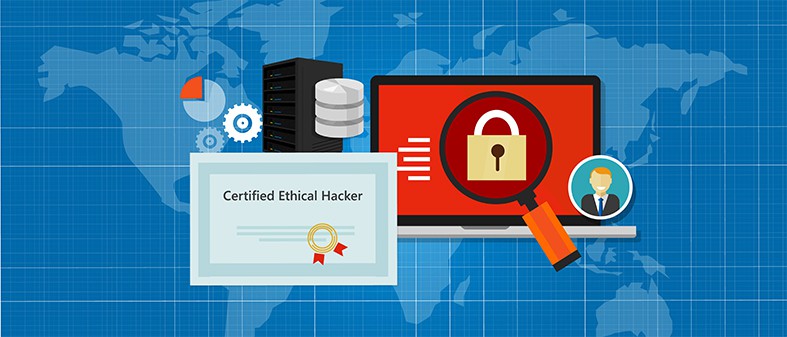
What Are the Devices That Are the Most Vulnerable To Hacking?
The top devices that are vulnerable to hack are:
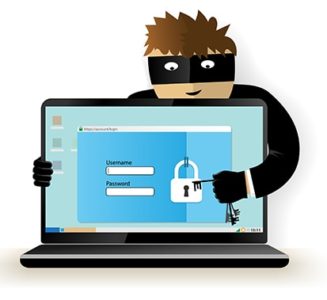
- Email: Email was and still is the source of most cyberattacks. This is the case because it is easy to click on a phishing link, especially considering that one in every 100 emails contains a phishing link. With nearly all businesses communicating over email, it is no surprise that email is where users are easily exposed.
- Routers: A cyberattack can happen to your router, especially if it is not password protected. A hack can cause eavesdropping, monitoring, interfering with HTTP connections, using your internet connection and many other issues. It is imperative to stay protected and use a strong password.
- Phones: With so much internet use, it is no wonder that phones are among the most vulnerable devices. A hacked phone will have a shorter battery life, high data usage, various pop-ups and unwanted messages. Hackers can even record video from your phone using FlexiSPY software. To deal with a phone breach, install anti-malware software and scan the device. Moreover, protect your accounts and work using preventative measures.
- Smart TVs: As with any device connected to the internet, your Smart TV can also be hacked. They can also catch a virus, which is why many TVs nowadays come with security software. To prevent this from happening to you, use secure passwords, set the settings on your TV to be restrictive and only download movies and apps from trusted sources.
What Are Common Techniques Used in Hacking?
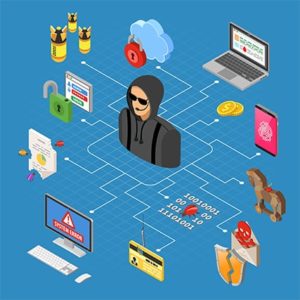
- Phishing: Phishing is the most frequent hacking technique used. It is when a hacker disguises themselves as a trustworthy individual or business and attempts to get you to give them your username and password or click on a malicious link.
- Cookie Theft: Your browser’s cookies have some of your personal data such as your browser history, usernames and even passwords. Cookie theft can happen when accessing websites that don’t have an SSL certificate.
- Trojans and Viruses: Another common attack vector is installing viruses and Trojans tasked with sending information to your attacker. They might even connect to your network, lock your files and do other malicious activities.
- DDoS Attacks: Denial of service attacks include flooding your web server with lots of requests to the point where it can’t handle it anymore and crashes.
- Clickjacking: A clickjacking attack involves baiting you to click something you aren’t trying to. These are often big “X” buttons to close a tab that will instead send you to a malicious location.
What Are the Prevention Methods From Getting Hacked?
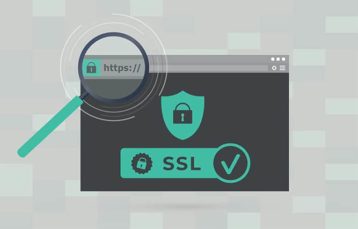
- HTTPS Encryption: This is an encrypted method of transferring information, which keeps files and messages safe. Always use this protocol when you are surfing the internet to stay safe.
- Update: Keep your operating system and anti-malware software updated. Install the updates to allow them to run smoothly and offer maximum protection. Keep in mind that sometimes just having your computer connected to the internet poses a threat.
- Check URLs: You can end up on a scam website by clicking on a phishing link in emails that require you to enter your log-in information. Always check whether you are at the right website by examining the URL.
- Download software and apps from trusted sources: Verified and trusted sources are app stores and the official websites of service providers. If you accidentally download a file from an unknown source, be sure not to install it and delete it as soon as possible.
What Are the Best Antivirus Software Against Hacking?
The best antivirus software against hacking are:
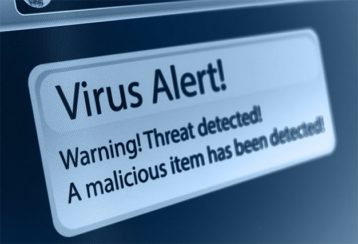
- McAfee is antivirus software that spots both known and new trojans. It is considered one of the best pieces of antivirus software amongst cyber security experts. Besides fighting malware, it also offers a password manager and a VPN. It can detect 100% of zero-day malware attacks. One drawback of using McAfee is that it can result in high CPU usage.
- Bitdefender is one of the best pieces of antivirus software on the market. It offers numerous protections against malware and intruders. The interface is user-friendly and the additional features outnumber almost any other antivirus software. It also includes exceptional anti-phishing features and webcam defense.
- Kaspersky is an antivirus software with a 100% detection rate. It offers several types of scans and real-time protection along with detection of trojans, spyware and rootkits. Kaspersky also protects against DDoS attacks usually performed by Black Hat Hackers.

